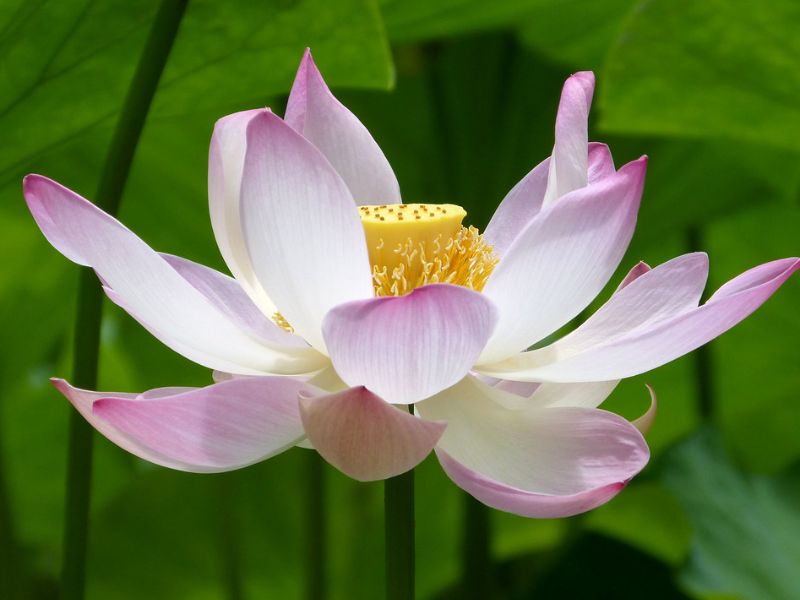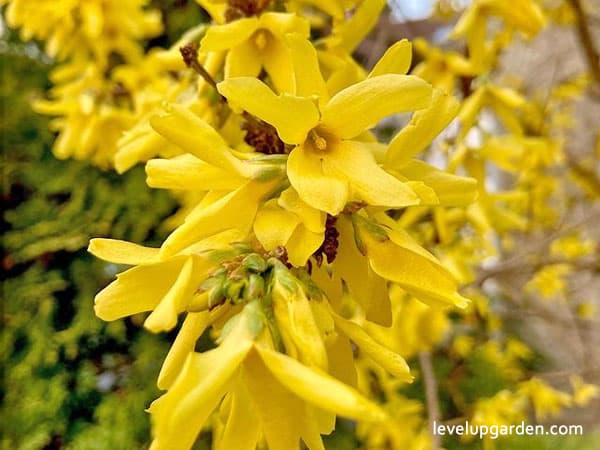The Owari Satsuma Mandarin Tree (Citrus reticulata ‘Owari’) stands as a beacon for those seeking a sweet citrus delight. This hardy variety is unmatched in resilience, capable of enduring temperatures as chilling as 15°F. It’s not particular about the soil, only requiring it to be well-drained, and its compact stature makes it an ideal candidate for pot cultivation, especially in colder regions.

Its fruits are an embodiment of convenience, encased in a soft skin that yields easily, revealing a seedless, juicy treasure. And what better time for it to ripen than during the festive Christmas season?
But the Owari Satsuma is more than just its delightful fruit. It paints a picturesque scene in gardens and patios with its aromatic ‘orange-blossom’ blooms and glossy evergreen foliage that persists throughout the year. Its adaptability is commendable; while it thrives under sunny skies in zones 8 to 11, it still grows in a well-draining pot, moving indoors when frost threatens.
Though it basks in sunlight, it’s prudent with water, asking for it only when the soil feels somewhat dry. Its easy-going nature extends to its resistance to pests and its self-fertility, ensuring a bountiful harvest from just a single tree. Investing in the Owari Satsuma Mandarin tree is akin to welcoming years filled with vibrant aesthetics, succulent fruits, and sheer gardening pleasure.

Plant Profile: Spotlight on the Owari Satsuma Mandarin Tree
The Owari Satsuma Mandarin tree offers the delightful experience of harvesting petite, seedless oranges characterized by their sweetness and effortless peelability. These mandarins, akin to clementines and tangerines, are particularly popular among kids who can relish them without the fuss of seeds, making them a delightful treat for the entire family.
Growing the Owari Satsuma Mandarin tree is a breeze. Once its roots are firmly set, it requires minimal attention. Remarkably drought-resistant, this citrus tree stands resilient against most common pests and diseases. As an evergreen, it flourishes in zones 8 through 11. However, for those residing outside these zones, fear not.

This adaptable tree can grace patios in nearly any USDA zone, but it seeks shelter when temperatures dip below 40 degrees. For guidelines on how to care for it during colder months, delve into our section on overwintering citrus trees.
- Mature Height: 12 ft. pruned
- Mature Width: 10 ft.
- Sunlight: Full-Partial
- Growth Rate: Moderate
- Harvest Time: October-December
- Botanical Name: Citrus reticulata ‘Owari’
- Appearance of the Owari Satsuma Mandarin Tree
Distinctive in stature, the Owari Satsuma Mandarin tree adopts a more erect posture compared to other citrus relatives. Its bountiful yield is often so plentiful that the branches arch gracefully under the weight of the fruit, seemingly reaching down to touch the earth. Though it can be classified as a small tree, it often resembles a shrub, seldom surpassing a height of 10 feet.
This compact size renders it a perfect fit for petite gardens or container cultivation. Its evergreen nature ensures a year-round display of glossy, deep-green leaves, modest in size. When the spring comes, the tree is adorned with fragrant white blossoms that gather in clusters, signaling the promise of the upcoming harvest. By November, the tree starts showcasing its vibrant fruits, which maintain their ripening spree until the end of December.

Growing and Care Conditions for the Owari Satsuma Mandarin Tree
The Owari Satsuma Mandarin holds a revered position among Satsuma types, acclaimed for its sweet, seedless fruits. Its timely ripening during the festive months of November and December makes it an esteemed presence during Christmas celebrations.
Cultivating this tree is relatively straightforward, with its minor susceptibility to pests and diseases requiring little intervention. While some homegrown fruits may exhibit skin imperfections, they don’t compromise the delectable taste of the flesh within.
Planting: Choose a location that receives ample sunlight and offers well-drained soil. Initially, post-planting, the tree demands frequent watering, approximately twice weekly. Once established, ensure the soil remains moderately moist, avoiding waterlogged conditions.
Citrus trees have a tendency for humid environments. In arid regions or if growing indoors, daily misting of the leaves or using a humidifier can keep them thriving. For those in cooler regions, proximity to a south or south-east facing wall provides added warmth. If the soil tends to be overly damp, opt for a mounded planting approach.
Light
Full sun exposure ensures optimal growth and fruit production.

Watering
Implement a consistent watering regimen, allowing the soil’s top 2 to 3 inches to dry between watering sessions. For potted trees, a simple finger test about 2 inches deep can guide your watering frequency.
Fertilizer
During the warmer months of spring and summer, nourish your tree every six weeks with a citrus-focused fertilizer. As temperatures drop in autumn and winter, reduce this to once every 2 to 3 months. Potted citrus trees, due to their rapid nutrient consumption, benefit from more frequent feeding sessions, specifically at the onset of spring, early summer, and autumn.
Soil Requirements
Well-draining soil rich in organic matter fosters healthy growth.
Temperature
Suitable for planting in USDA zones 8 to 11, it thrives best outdoors. In colder climates or during chilly spells, it’s prudent to move the tree indoors once temperatures approach 40 degrees.

Pruning
Regular pruning, barring winter, helps remove dead or overlapping branches and facilitates better light penetration. Post fruiting, trim any dead wood and aerate the tree’s core. For container-grown Mandarins, similar pruning practices apply.
Pests and Diseases
While the tree boasts a strong resistance, occasional pests or diseases might arise, necessitating minimal treatment.
Pollination
Being self-fertile, it doesn’t rely on cross-pollination. However, to boost fruit yield, hand pollination using a fine-tipped paint brush can be practiced.
Maintenance
A key aspect of maintaining this citrus beauty is to replicate its preferred humid environment, achieved through daily misting or using humidifiers, especially if situated indoors during winter.

Why the Owari Satsuma Mandarin Tree is a Must-Have for Your Garden
The beauty of the Owari Satsuma Mandarin Tree extends beyond its visually appealing aesthetic. This remarkable tree is celebrated for its adaptability, thriving both as an outdoor staple in various locales and as a patio plant suitable for colder zones.
What sets the Owari apart is its resilience to brief cold spells, tolerating temperatures as low as 12 to 15 degrees. This hardiness means gardeners aren’t restricted by their geographic location when considering this tree.
The Owari Satsuma’s fruits are a true delight. Their sweetness surpasses even those you’d find in a store, closely resembling the beloved clementines. Their easy-peel nature combined with a near-seedless interior makes them especially inviting.
Imagine the joy of relishing these sweet mandarins, freshly plucked from your garden during the festive season. The convenience they offer, especially to children, as a mess-free, healthful snack is unparalleled.
Another charming trait of the Satsuma tree is its compact stature. Despite its diminutive size, usually maxing out at about 10 feet, it doesn’t compromise on fruit yield. Its size makes it an ideal candidate for pot cultivation, ensuring that even those with spatial constraints can enjoy its bounty.

For those residing in frost-prone areas, the tree’s manageable size allows for easy relocation indoors during colder months. Moreover, the tree offers flexibility in its form; it can be pruned into various topiary styles or maintained as a bush, remaining evergreen throughout the seasons.
An added bonus is its fragrant flowers that blossom in late winter. These give way to small green fruits that undergo a leisurely ripening process throughout summer. If your tree is housed indoors during its flowering period, a simple hand-pollination technique can ensure a bountiful harvest.
Reaping the benefits of the Owari Satsuma doesn’t necessitate a vast greenhouse or even extensive gardening knowledge. A sunlit window and some basic care can guarantee a steady supply of these refreshing, vitamin C-rich mandarins.
Their timely ripening around Christmas and their impeccable taste places them in a league of their own among citrus varieties. Whether you’re in colder regions or blessed with a tropical climate, the Owari Satsuma, with its blend of hardiness and gustatory delight, promises to be a stellar addition to any garden.

Frequently Asked Questions (FAQs)
Can the Owari Satsuma Mandarin Tree tolerate cold temperatures?
Yes, the Owari Satsuma Mandarin Tree is known for its resilience and can withstand brief temperature drops down to 12 to 15 degrees. This makes it suitable for various locations, both outdoors and as a patio plant in colder zones.
How is the fruit quality of the Owari Satsuma compared to store-bought mandarins?
The Owari Satsuma’s fruits are renowned for their sweetness, surpassing even those found in stores. They resemble clementines in taste and texture, are easy to peel, and have very few seeds, making them a preferable choice.
How large does the Owari Satsuma Mandarin Tree grow?
The tree is compact, usually reaching a maximum height of about 10 feet. This size makes it ideal for pot cultivation and easy relocation indoors during frost-prone months.
Do I need a vast greenhouse to grow the Owari Satsuma Mandarin Tree?
No, a vast greenhouse is not necessary. The Owari Satsuma can thrive with just a sunlit window and basic care. Its manageable size allows even those with limited space to cultivate and enjoy its bounty.








Leave a Reply